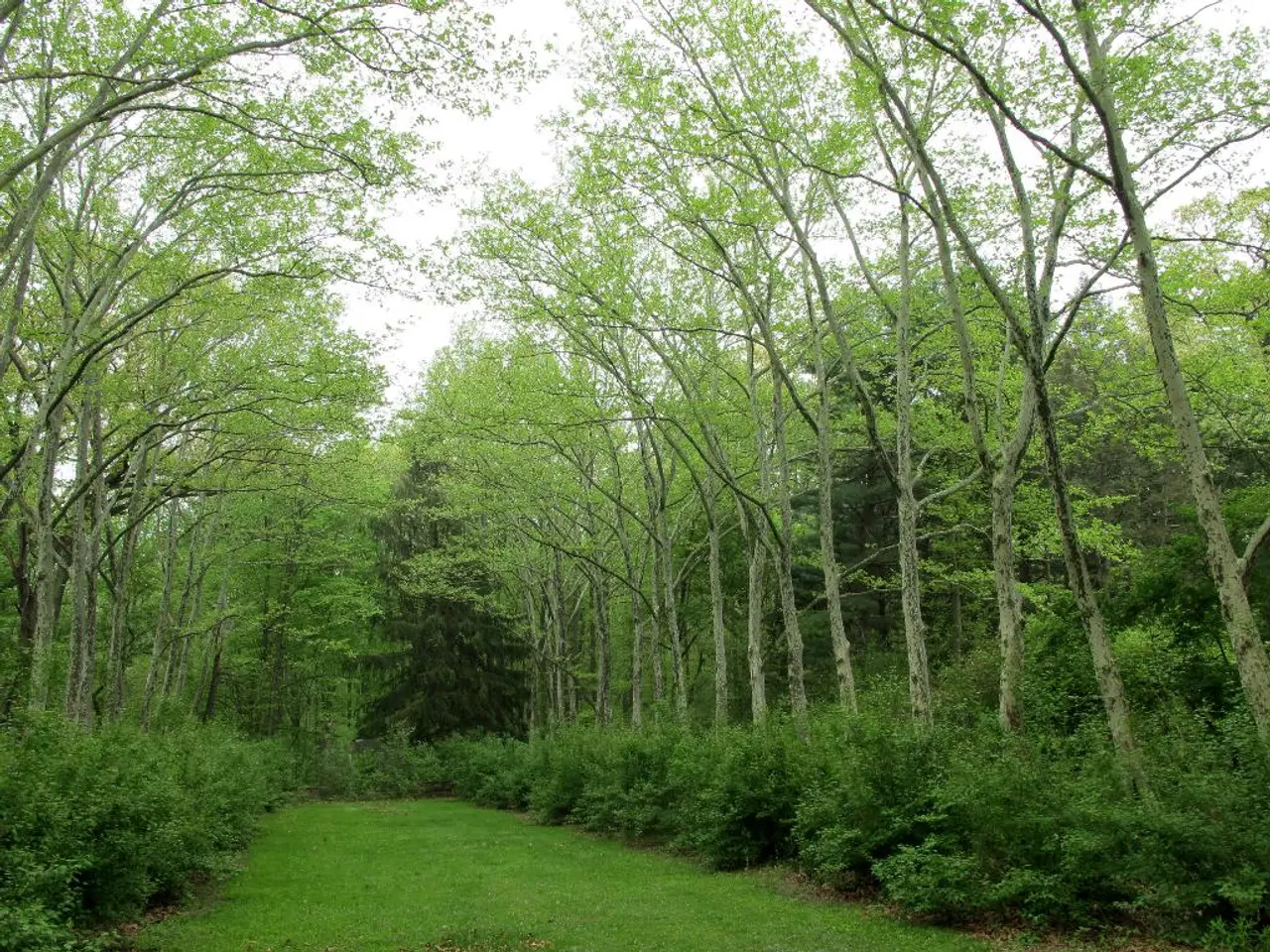Garden fashions of 2025: a sneak peek at the forthcoming year's styles
In 2025, garden design is set to undergo a transformative shift, with an emphasis on sustainability, wildlife-friendly environments, and well-being. Here are the top trends that are expected to shape the future of gardening:
1. Native and Pollinator-Friendly Plants: Incorporating native species in garden designs supports local ecosystems and attracts pollinators like bees and butterflies, enhancing biodiversity.
2. Smart Irrigation Systems: These systems optimise water usage, reducing waste and conserving resources, which is crucial for sustainable gardening.
3. Outdoor Living Rooms: Designing functional outdoor spaces that extend living areas, promoting a connection with nature and enhancing well-being.
4. Low-Maintenance Landscapes: Using easy-to-care-for plants and materials reduces upkeep, making gardening accessible to a wider audience.
5. Edible Landscaping: Integrating edible plants into garden designs, allowing for homegrown food and supporting local food systems.
6. Vertical Gardens and Indoor Herb Gardens: Maximising space with vertical gardens and indoor herbs, ideal for urban settings and small spaces.
7. Biophilic Design: Incorporating elements that foster a deep connection with nature, promoting well-being and psychological health.
8. Drought-Tolerant Landscaping: Utilising plants that require less water, reducing water consumption and supporting water conservation efforts.
9. Ponds and Water Gardens: Creating habitats for wildlife and managing stormwater runoff, enhancing biodiversity and ecological balance.
10. Environmentally Responsible Lighting: Using low-wattage and LED lighting to minimise energy use and avoid disrupting local wildlife.
These trends combine aesthetic appeal with ecological responsibility, creating harmonious and sustainable outdoor spaces. Maximalist planting designs that create harmonious plant communities are gaining popularity. Gardeners are encouraged to select plants based on ecological roles and interactions rather than purely aesthetic appeal.
In 2025, gardens are expected to adopt a wilder, less structured aesthetic. Naturalistic planting schemes featuring diverse colours, textures, and heights are becoming popular. Gravel, sand, or waste gardening is a sustainable approach to creating resilient landscapes, particularly in drought-prone areas.
The biophilic design trend views gardens as extensions of the home, blending indoor comfort with outdoor freshness. This method repurposes materials often considered waste, such as gravel, sand, and on-site concrete. Creating habitats for wildlife is becoming a priority for gardeners, transforming gardens into sanctuaries for various species.
Plants adapted to harsh environments are used in waste gardening, typically occurring in well-drained, nutrient-poor soils. Water features like small ponds provide essential hydration and attract wildlife. Vertical gardening is on the rise as an innovative solution for maximising limited space in urban areas.
Informal borders that mimic untamed landscapes are expected to be common in garden design. The no-dig approach promotes a deeper understanding of soil as a living system. Diverse planting schemes offer food for many species, enhancing biodiversity. Trees play a crucial role in enhancing garden ecosystems by providing shade, improving air quality, creating micro-habitats, and supporting wildlife.
Log piles create shelter for beneficial insects and small creatures, fostering thriving ecosystems. Repurposing materials is a growing trend in garden design, aimed at sustainability. These trends not only make gardens more beautiful but also contribute to a healthier planet and a more balanced ecosystem.
- In 2025, the focus in garden design will be on incorporating native plants to create pollinator-friendly environments, enhancing biodiversity.
- Smart irrigation systems will optimize water usage, promoting sustainability and conserving resources.
- Outdoor living rooms will extend living areas, fostering a connection with nature and enhancing well-being.
- Low-maintenance landscapes utilizing easy-to-care-for plants and materials will make gardening more accessible.
- Edible landscaping will allow for homegrown food and support local food systems, aligning with a lifestyle that emphasizes sustainability.
- Vertical gardens and indoor herb gardens will maximize space, catering to urban settings and small spaces.
- Biophilic design, with its focus on connecting with nature, will promote well-being and psychological health.
- Drought-tolerant landscaping will use plants that require less water, supporting water conservation efforts.
- Ponds and water gardens will create wildlife habitats and manage stormwater runoff, enhancing biodiversity and ecological balance.
- Environmentally responsible lighting, using low-wattage and LED lighting, will minimize energy use and avoid disrupting local wildlife.
In addition, maximalist planting designs that create harmonious plant communities are gaining popularity. Gardeners are encouraged to select plants based on ecological roles and interactions rather than purely aesthetic appeal. The wilder, less structured aesthetic is expected to be common, with naturalistic planting schemes featuring diverse colors, textures, and heights.
Gravel, sand, or waste gardening, using plants adapted to harsh environments, will create resilient landscapes. Informal borders mimicking untamed landscapes will be common, while the no-dig approach promotes a deeper understanding of soil as a living system. Vertical gardening will continue to rise, providing solutions for maximizing limited space in urban areas.
Trends in garden design are not just about creating beautiful spaces but also contributing to a healthier planet and a more balanced ecosystem. Repurposing materials is a growing trend aimed at sustainability, and log piles will create shelter for beneficial insects and small creatures, fostering thriving ecosystems. These trends transform gardens into sanctuaries for various species, promoting biodiversity and ecological responsibility.




